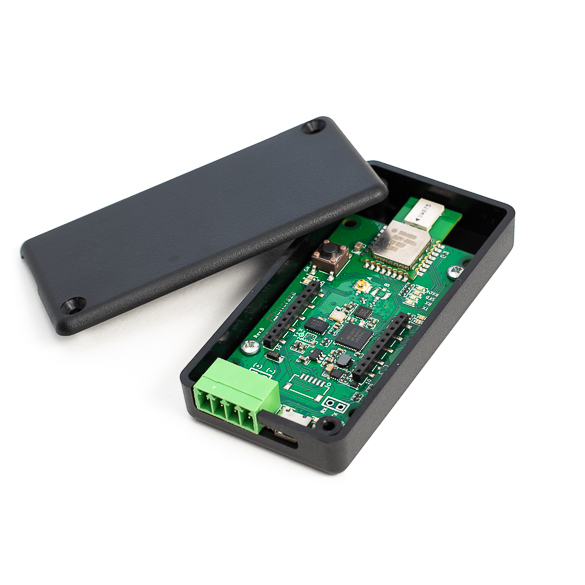
Robot positioning
How it works
Using the Roadrunner you can enable other robots and equipment to be integrated with the Loco positioning system. The Roadrunner uses the same firmware-base as the Crazyflie and will merge UWB measurements together with the IMU data to get better positioning precision.
Using the Loco positioning system you will get the position directly in the Roadrunner, but it’s also possible to send it to a central point using a low latency 2.4 GHz radio.
Specifications
Features
- Supports Tag mode
- Based on the Crazyflie hardware and uses same code-base as the Crazyflie
- 3-axis accelerometer / gyroscope
- Low latency 2.4 GHz radio that supports Bluetooth LE
- 5 - 12V power supply or micro-USB
- Data communication via USB, UART, low latency 2.4 GHz radio or Bluetooth LE
- Wireless firmware updates
- Supports Crazyflie expansion decks
- Supports Crazyflie libraries and clients
Mechanical specifications
- Roadrunner PCBA
- Weight: 9.6 g
- Size (WxHxD): 35x11x77 mm
- Roadrunner PCBA with enclosure
- Weight: 28.7 g
- Size (WxHxD): 40x15x80 mm
Microcontroller specification
- STM32F405 main application MCU (Cortex-M4, 168MHz, 192kb SRAM, 1Mb flash)
- nRF51822 radio and power management MCU (Cortex-M0, 32Mhz, 16kb SRAM, 128kb flash)
- Full speed USB device interface
- Partial USB OTG capability (USB OTG present but no 5V output)
- 8KB EEPROM
Sensor specification
- 3 axis accelerometer / gyroscope (BMI088)
Ranging specification
- Based on the Decawave DWM1000 module
- Implements IEEE 802.15.4 UWB
- Ranging accuracy ±10 cm according to DWM1000 spec. See the wiki for measurements.
- Maximum tested system range 10 m. The Decawave DWM1000 module is specified to 300 m.
- Nr of anchors required: theoretical minimum of 4 for 3D positioning. More anchors add redundancy and accuracy.
Radio specification
- UltraWide band radio
- Operates at 3.2 - 7 GHz
- Channel bandwidth 500 MHz
- 2.4 GHz radio
- 20 dBm radio amplifier
- Bluetooth Low Energy support with iOS and Android clients available (tested on iOS 7.1+ and Android 4.4+)
- External antenna using U.FL connector
Usage
Go to the Loco positioning system tutorial to set the loco positioning up. Afterwards, you can try out the loco positioning based flight tutorial. Also for more general information over how the loco positioning system fits in our eco system, go to Positioning Systems Overview.
Development
Implementation Firmware
All the Loco positioning is estimated onboard of the crazyflie. Go the the technical documentation of the loco positioning system of how it is implemented into the Crazyflie Firmware and the Loco positioning node firmware
It is important to have a good feel for the stabilizer module of the crazyflie, in particular state estimation with the Extended Kalman Filter
Resources
If you have any further questions please contact support@bitcraze.io